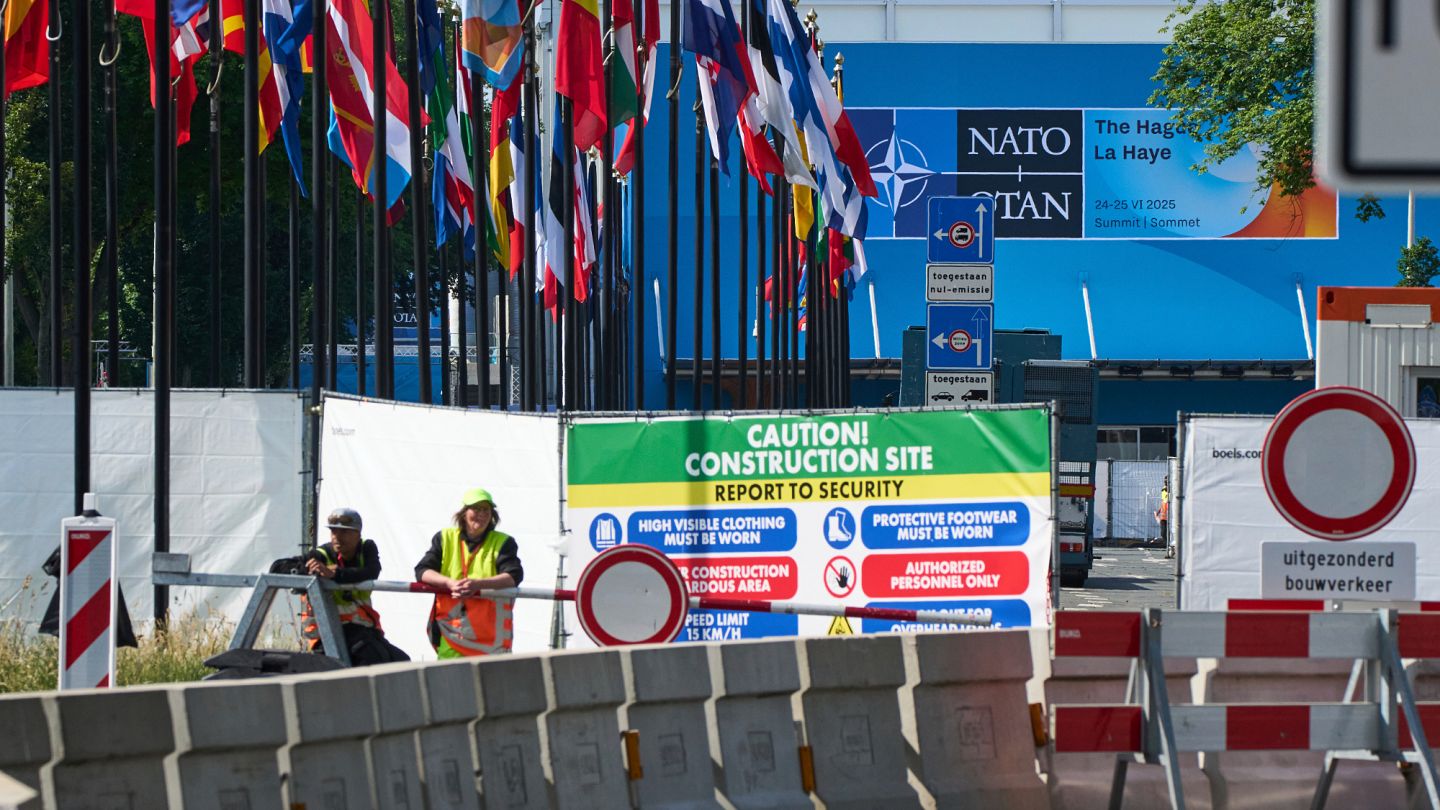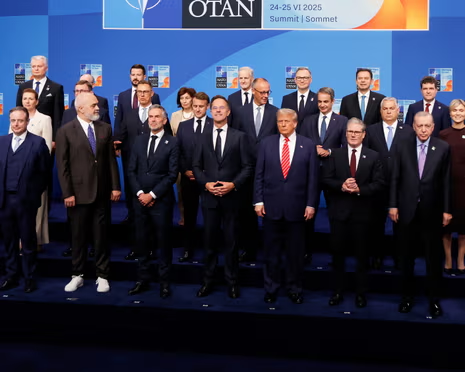Introduction
The NATO Summit 2025 in The Hague made history as 32 member nations gathered under intense security to chart a new course for the alliance’s future. Spearheaded by NATO’s new Secretary-General Mark Rutte, the two-day summit saw leaders grapple with rising tensions with Russia, military budget commitments, and internal political drama.

1. NATO Commits to 5% Defence Spending Target
The most headline-grabbing outcome from the summit was NATO’s new 5% defence spending target—a major increase from the current 2% benchmark. While only 3.5% must come from direct defence expenditures like personnel and arms, the remaining 1.5% can be allocated to areas like infrastructure security, innovation, and civil preparedness NATO 2025 summit.
This increase comes amid Russia’s intensifying threats on Europe’s eastern flank. Each member will be required to submit annual plans showing how they intend to meet the 5% goal by 2035, with the first major review set for 2029.
2. Trump Reaffirms Article 5 Commitment – With Conditions
Despite past skepticism, U.S. President Donald Trump made a rare public commitment to NATO’s cornerstone: Article 5, which holds that an attack on one member is an attack on all. “I stand with Article 5. That’s why I’m here,” he told reporters, seemingly walking back previous comments where he had hinted he wouldn’t protect countries that failed to spend enough.
This was welcome news to allies bordering Russia, though Trump’s long-term stance remains uncertain. His endorsement was seen as contingent on continued increases in member contributions NATO 2025 summit.
3. Russia Avoids Direct Condemnation in Final Statement
While NATO members agreed that Russia poses a long-term threat to Euro-Atlantic security, the summit’s final communique notably did not directly blame Moscow for the ongoing Ukraine war. This softening of language was interpreted as a diplomatic concession to Trump, who has taken a more conciliatory tone toward Russia since taking office.
Still, the document reaffirmed support for Ukraine, with leaders vowing continued military and economic assistance. Ukrainian President Volodymyr Zelensky met with several leaders during the summit and was assured of NATO 2025 summit long-term backing.
4. Spain in the Hot Seat Over Low Defence Spending

Spain’s Prime Minister Pedro Sánchez faced sharp criticism at the summit, both for domestic scandals and for Madrid’s meagre 1.24% GDP defence contribution. Trump accused Spain of seeking “a free ride” and threatened repercussions in ongoing trade negotiations, despite Spain being part of the EU.
Sánchez stood by his country’s allocation, calling 2.1% “sufficient and compatible with our welfare model.” His body language at the summit—standing apart in the family photo and avoiding Trump—didn’t go unnoticed NATO 2025 summit.
5. Rutte’s ‘Daddy’ Moment With Trump
NATO’s new boss, Mark Rutte, sought to curry favour with Trump—perhaps too eagerly. In a surreal exchange, Rutte joked about Trump being the “daddy” who stopped the Israel-Iran conflict, saying he “deserves all the praise.” Trump, amused, quipped: “If he doesn’t like me, I’ll hit him hard.”
Conclusion
The 2025 NATO summit has ushered in a new era of defence ambition with the historic 5% spending target. Yet, the alliance remains on edge—balancing Trump’s influence, growing Russian aggression, and internal friction among member states. As the alliance moves forward, the success of this new strategy will depend not just on budgets, but on unity and resolve.

To track how each NATO member progresses on its defence promises, follow our ongoing updates on NATO 2025 Defence Tracker.
The 2025 NATO summit has ushered in a new era of defence ambition with the historic 5% spending target. Yet, the alliance remains on edge—balancing Trump’s influence, growing Russian aggression, and internal friction among member states. As the alliance moves forward, the success of this new strategy will depend not just on budgets, but on unity and resolve.









